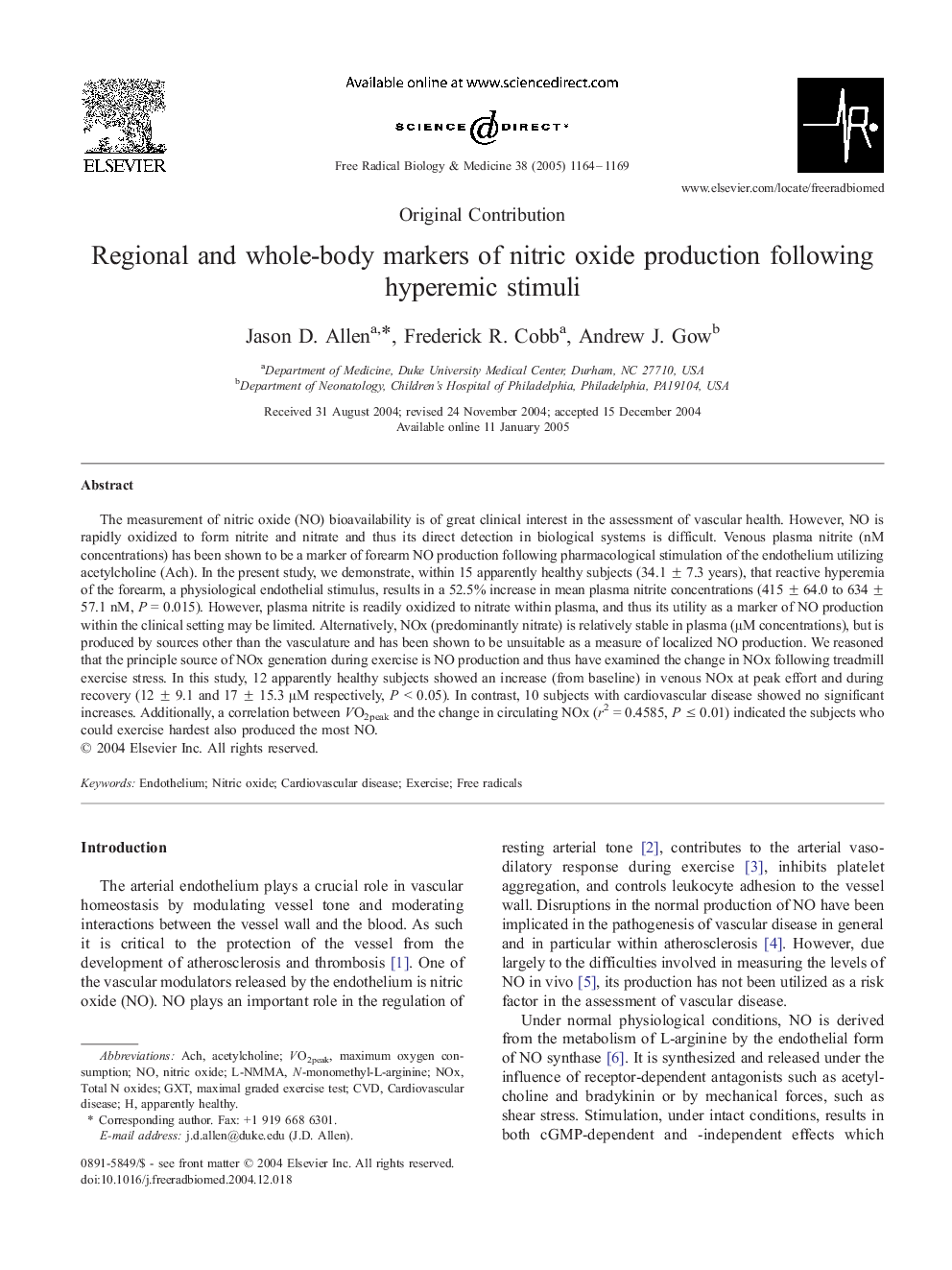| کد مقاله | کد نشریه | سال انتشار | مقاله انگلیسی | نسخه تمام متن |
|---|---|---|---|---|
| 10738871 | 1046840 | 2005 | 6 صفحه PDF | دانلود رایگان |
عنوان انگلیسی مقاله ISI
Regional and whole-body markers of nitric oxide production following hyperemic stimuli
دانلود مقاله + سفارش ترجمه
دانلود مقاله ISI انگلیسی
رایگان برای ایرانیان
کلمات کلیدی
موضوعات مرتبط
علوم زیستی و بیوفناوری
بیوشیمی، ژنتیک و زیست شناسی مولکولی
سالمندی
پیش نمایش صفحه اول مقاله

چکیده انگلیسی
The measurement of nitric oxide (NO) bioavailability is of great clinical interest in the assessment of vascular health. However, NO is rapidly oxidized to form nitrite and nitrate and thus its direct detection in biological systems is difficult. Venous plasma nitrite (nM concentrations) has been shown to be a marker of forearm NO production following pharmacological stimulation of the endothelium utilizing acetylcholine (Ach). In the present study, we demonstrate, within 15 apparently healthy subjects (34.1 ± 7.3 years), that reactive hyperemia of the forearm, a physiological endothelial stimulus, results in a 52.5% increase in mean plasma nitrite concentrations (415 ± 64.0 to 634 ± 57.1 nM, P = 0.015). However, plasma nitrite is readily oxidized to nitrate within plasma, and thus its utility as a marker of NO production within the clinical setting may be limited. Alternatively, NOx (predominantly nitrate) is relatively stable in plasma (μM concentrations), but is produced by sources other than the vasculature and has been shown to be unsuitable as a measure of localized NO production. We reasoned that the principle source of NOx generation during exercise is NO production and thus have examined the change in NOx following treadmill exercise stress. In this study, 12 apparently healthy subjects showed an increase (from baseline) in venous NOx at peak effort and during recovery (12 ± 9.1 and 17 ± 15.3 μM respectively, P < 0.05). In contrast, 10 subjects with cardiovascular disease showed no significant increases. Additionally, a correlation between VO2peak and the change in circulating NOx (r2 = 0.4585, P ⤠0.01) indicated the subjects who could exercise hardest also produced the most NO.
ناشر
Database: Elsevier - ScienceDirect (ساینس دایرکت)
Journal: Free Radical Biology and Medicine - Volume 38, Issue 9, 1 May 2005, Pages 1164-1169
Journal: Free Radical Biology and Medicine - Volume 38, Issue 9, 1 May 2005, Pages 1164-1169
نویسندگان
Jason D. Allen, Frederick R. Cobb, Andrew J. Gow,